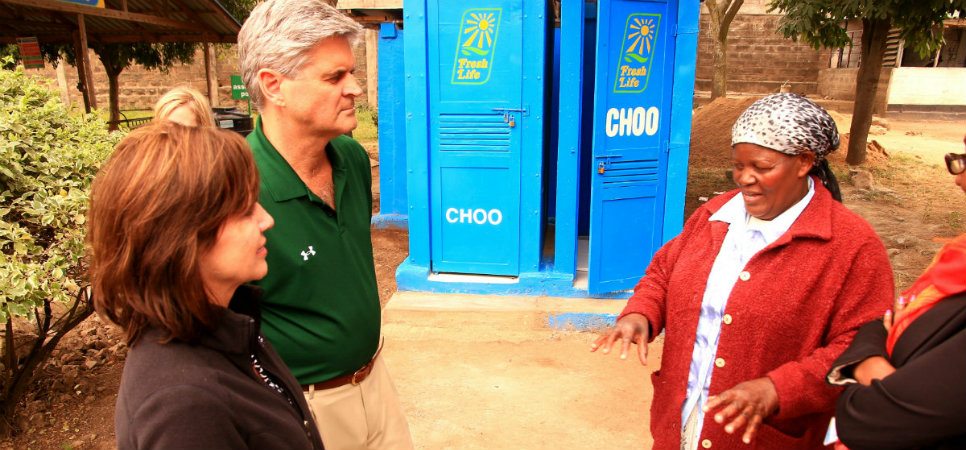This Spotlight is a part of a special blog series curated by the Case Foundation featuring Be Fearless stories from the field. Follow along with us as we meet people and learn about organizations that are taking risks, being bold and failing forward in their efforts to create transformative change in the social sector. This Spotlight is authored by Emily Ente, Director of Strategy and Partnerships at Foster America.
At least one in eight children in America is abused or neglected by the time she or he turns 18. When this happens, the U.S. child welfare system—a network of federal, state, local and nonprofit agencies—provides services to keep children safe in their homes, and, in the worst cases, places them in foster care. But across all key measures, our country is failing these most vulnerable kids. For example, among older youth leaving foster care, only half graduate from high school, one-third experience homelessness, and four out of five young men in this group are arrested. Unfortunately, the child welfare system is stretched beyond its capacity and expertise to change the odds for these kids. We can and must act with urgency to do better.
Sherry Lachman, Founder and Executive Director of Foster America, knows from both personal and professional experience about the challenges that kids face in the child welfare system. Between the ages of six and eight, she was placed in three different foster homes. As Sherry explains, “Ultimately I feel very lucky. Instead of allowing me to view myself as a victim, my fourth-grade English teacher Ms. Owen convinced me that I could someday use the trauma I had experienced to help other vulnerable kids. Ms. Owen’s message changed my life.”
Motivated by her experience and wanting to improve outcomes for other kids in the system, Sherry took a risk in late 2015 and left her job as domestic policy advisor to Vice President Biden to found Foster America, an organization devoted to improving the child welfare system. Sherry first interviewed over 100 experts in the field about critical pain points in the child welfare system and why it has been so slow to evolve. She recalls, “One of the major themes that emerged from these interviews is that there is a shortage of reform-minded leaders in the field with the diverse skills needed to drive change.”
To address this critical gap, Foster America launched a fellowship program, reaching beyond its bubble to build a pipeline of extraordinary leaders with the diverse skills, bringing these seemingly unlikely partners together to tackle the major challenges in the child welfare system. The Foster America program recruits and prepares talented mid-career professionals from business, technology, health and education backgrounds for high-impact fellowship roles at child welfare agencies.
In the short run, Foster America fellows lead reform projects at these agencies, leveraging their professional expertise to develop new approaches to child welfare problems. For example, fellows with expertise in marketing and user-centered design can help child welfare agencies improve the recruitment and retention of high-quality foster families. Fellows with data expertise can develop predictive analytics models that enable agencies to predict and prevent negative outcomes such as child abuse or neglect. Each fellowship project is designed to have a lasting local impact while also informing scalable solutions for the child welfare sector.
In the long run, Foster America’s aim is to build a national movement of fellowship alumni who will move on to higher levels of child welfare leadership and help transform the child welfare system. Foster America is making a big bet and setting an audacious goal: within five years, Foster America intends to recruit more than 100 new leaders, who will reach more than 75 percent of children in foster care. Given the relatively small scale of the child welfare field in the U.S., 100 new leaders can have a major impact on outcomes for kids and families nationwide.
Progress is already underway. Foster America launched a pilot fellowship cohort in Fall 2016. In the process, the organization confirmed there is a high level of demand for the program from both child welfare agencies and prospective candidates. Leaders at 13 child welfare agencies expressed an interest in participating in the pilot and the Foster America team chose three: New York City, Allegheny County (Pittsburgh) and Rhode Island. During the pilot, agency partners invested about $800,000 in the fellows’ salary and benefits, which further signaled their commitment and strengthened the organization’s sustainability and scalability. More than 250 candidates applied for eight fellowship spots in the pilot cohort, resulting in an acceptance rate of only three percent.
In 2018, Foster America will continue to support the first cohort of fellows, who are already making significant contributions on the ground, and add new fellows to the original partner sites. The program will also post fellows in four additional sites, including the child welfare agencies of Washington, DC, Minnesota, Missouri and Washington State. Overall, the organization is committed to fearlessly continuing to bring together nontraditional partners from across sectors and challenging the status quo. This bold experiment, coupled with an organizational culture of continuous experimentation, learning and improvement, positions Foster America, along with its partners in child welfare, to fundamentally transform outcomes for kids and families.
Visit www.foster-america.org to learn more about Foster America and how you can partner with the organization as a fellow, volunteer, donor or corporate partner. If you have any additional questions about how to get involved, contact me, Emily Ente, Foster America’s Director of Strategy and Partnerships, at Emily.ente@foster-america.org.
Feeling inspired? If you’re ready to begin your own Be Fearless journey start by downloading our free Be Fearless Action Guide and Case Studies.












